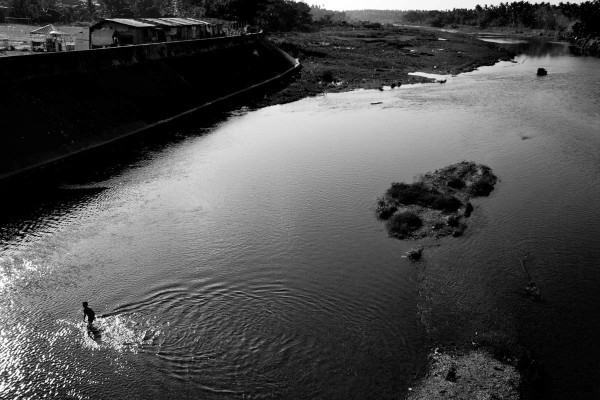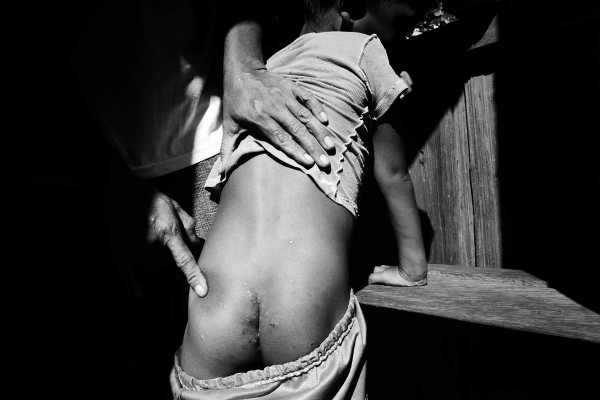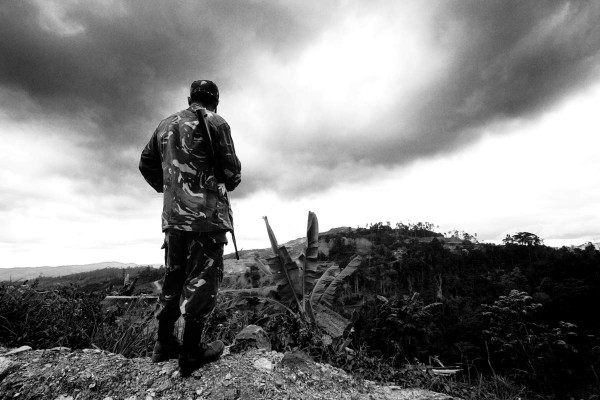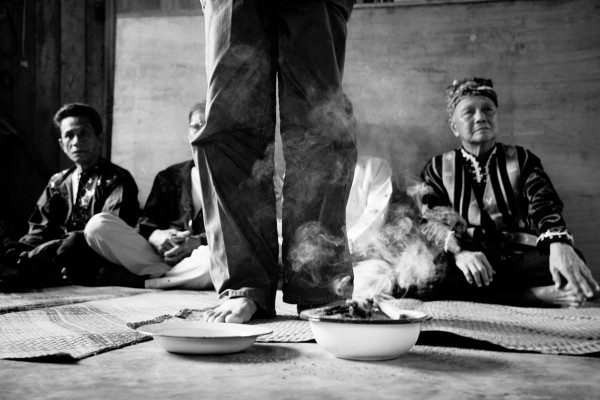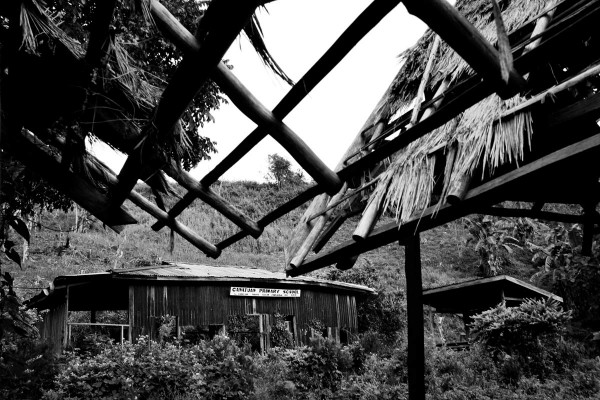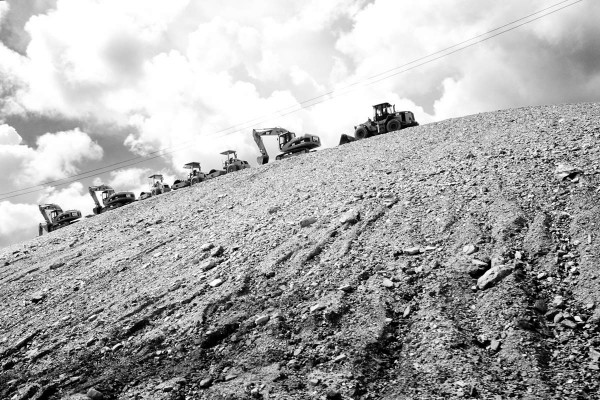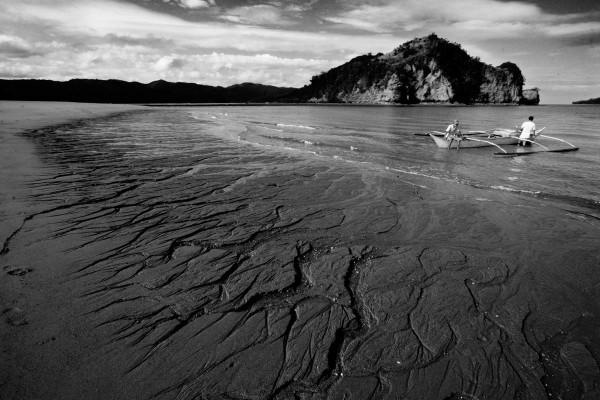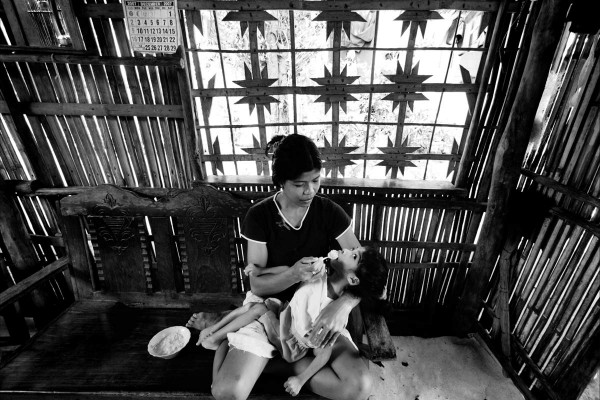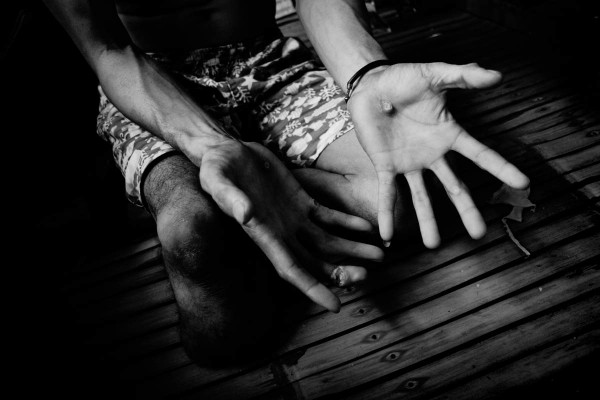All That Glitters: Canada’s toxic legacy in the Philippines
Alex FelipeWebsite
Alex Felipe witnesses the toxic effects of Canadian gold mining on three remote Philippine communities
Click here for a full-screen slideshow
Admitting that I was a Canadian has never been as difficult as when I travelled to the Philippines to photograph two Canadian-owned open-pit mining sites last winter. The fact that I am also Filipino by blood didn’t help.
I went to the island of Marinduque and visited the Marcopper Mining site, operated by Placer Dome, which began mining in 1969. The mine was closed in 1996 following the Boac River spill, one of the world’s greatest mining disasters, where a dam breach spilled between three and four million tonnes of tailings, rich in toxic heavy metals. Canadian taxpayers, through the Canadian Pension Plan, have invested over $350 million into the Marinduque mine.
I went to this site to witness the long-term effects of mining. For comparison I also visited a newer mining site on Mt. Canatuan on the large southern island of Mindanao by Toronto Ventures Incorporated (TVI), which began operations in 2005. That year, community representatives travelled to Canada to speak to parliament about TVI’s human rights violations in Canatuan. The Liberals responded by setting up a committee to create guidelines for Canadian mining companies at home and abroad; they later rejected the committee’s recommendations. Despite the community complaints TVI receives Canadian tax-dollar funds through CIDA for livelihood programs.
The government of the Philippines claims that mining will bring prosperity to the people. The mining laws are geared toward increasing foreign-owned operations, to help the ailing economy. But the truth is that few jobs are created around large-scale mining, and many, many more are lost.
Personally this was a surprise — I expected to see thousands working manual labour jobs. But open-pit mining is not labour intensive and most of the jobs are in the office, or as heavy equipment operators. And as most of the communities that have mines are away from city centres, the majority of their populations are not highly educated nor do they have the training to operate the equipment. The few new jobs available are easily outweighed by the number of jobs lost to the mine, usually in fishing, farming, or as small-scale miners.
Profit from the foreign-owned mines doesn’t even stay in the Philippines, as the government grants companies long renewable tax holidays, and allows for 100 percent foreign ownership and 100 percent repatriation of capital and profits. On Marinduque, it’s been more than 10 years since the mine closed, but none of the three spill sites have been fully rehabilitated. Sometimes during windy days, toxic mine waste is picked up and dropped on nearby villages. The locals call this their “snow from Canada.”
The tiny hamlet of Cosan at the base of Mt. Canatuan is home to no more than 40 people. It’s the last remaining independent mining site just a few hundred metres downstream from TVI’s sulphide dam.
The men and children from Cosan have started experiencing mysterious skin rashes in the years since the open pit began. The rashes are always in the lower extremities. For the men this is because they are often wet from the waist down working as gold pan miners. For the children it’s because they play in the creek.
TVI says that the water they dump into the creek that runs by the hamlet is clean. The locals, pointing to their visible wounds, claim otherwise.
One of the jobs available to locals is that of security. The Special Citizens Armed Auxiliary (SCAA) is a force armed with fully automatic armalite rifles. This is just one more example of the divide-and-conquer technique used by mining companies.
According to TVI’s website, there are benefits to this security:”People are able to sleep without fear of attack,” and “people are not in fear from oppression coming from a small minority — it is only those that want to go back to the old ways of illegal activities and oppression that would like to see the military presence gone.”
A Subanon ritual before the commencement of the gokum, a traditional indigenous trial. This assembly found the mining company guilty of illegal operations, but its verdict is not recognized by the government.
Canatuan Primary School was built by the small scale miners who lived on the mountain. This was where the president of the Philippines awarded the Subanon tribe an Ancestral Domain Title to the land. When TVI came this local school was closed.
The remains of the home of the chieftain’s aide is in the foreground of the photo. He left Canatuan in fear for his life and his family’s lives when he heard strangers under the floor of his home (which sits atop stilts).
The flag you see on the rock signifies the presence of gold ore on the property of this Canatuan resident, a small-scale-miner-turned-farmer. The mine has reached the edge of his property and he has little doubt they will be at his doorstep soon.
What really surprised me about mining operations in the Philippines was how few visible miners there were. These operations were seemingly run by a few large machines and a few supervisors. Thus the potential for employment for the community is very limited.
Locals told me that even before TVI entered the land there were miners on Mt. Canatuan. At its peak, about 10,000 small scale Filipino miners were in the area. Today less than one hundred remain in the community of Canatuan on the side of the mountain.
Though small-scale mining was a source of conflict between these outsiders and the Subanon people, they have since come together as the effects of underground tunneling by these independent miners was nothing compared to those of open-pit mining.
These Filipino miners lost their livelihoods when TVI arrived. Accompanied by the company’s heavily armed private militia (trained and armed by the Armed Forces of the Philippines) all tunnels and equipment were destroyed or confiscated without compensation.
They soon turned to destroying homes in the path of the mine. Many residents, intimidated by the growing unrest and the heavily armed security force, left with little to no compensation. Some stayed out of necessity and became farmers, though this number grows smaller every week. Despite their lack of experience at farming, they turned to it as the only thing left to them to provide for their families.
Locals say the meager amounts offered by TVI as a payoff would not pay for a similar piece of land and a home elsewhere so to accept would result in worse poverty.
Twenty-four hours a day, from 1975 to 1991, Marcopper Mining (operated by Canadian Placer Dome — which has since been bought out by Barrick Gold) dumped 200 million metric tonnes of toxic mine tailings onto Calancan Bay at surface level. What you see in this image is part of the 7.5 km long tailings causeway, an artificial landmass made up of mine tailings (a mix that includes dangerous levels of arsenic, lead, and mercury). The causeway used to be 9 km long, but the rains and tide have been slowly eroding it into the ocean.
The result has been the death of the corals and much of the life in this bay. The poverty of the local people forces them to continue to eat what they can catch resulting in major health problems.
Five-year-old Maria Neryl Pigquerra is one of three children born in Calancan Bay in 2002 with microcephalis. This condition leaves her smaller than her four-year-old brother, unable to communicate (other than crying), and with virtually no motor skills. She is fed congee (Maria can only swallow pureed food) by her mother, who wonders how a family of fishers will be able to care for her in the future.
Heavy metal poisoning is intergenerational, thus metals are transmitted from mother to child.
This is Wilson Manuba of Calancan Bay. He used to accompany his father fishing as a young boy in the late ’70s. He told me about how much fun he used to think the mine tailings were (“it felt different than the sand and mud, I used to love playing in it”).
Unfortunately, neither he nor his father knew about its dangers. And so regular barefoot exposure, coupled with regular cuts and scrapes on their feet (a daily reality for fishers) resulted in severe heavy metal poisoning for the father and son.
They both suffer from open tumor-like wounds that won’t heal. Wilson’s poisoning was so severe that he almost died and was saved only through the loss of his leg. Despite it all, both continued on as fishers as it was their only means of livelihood.
Wilson recently quit fishing when MACEC, a local NGO, provided him with a sari-sari store (a small village store).
Wilson has three children, two of whom also have persistent open wounds on their legs.
